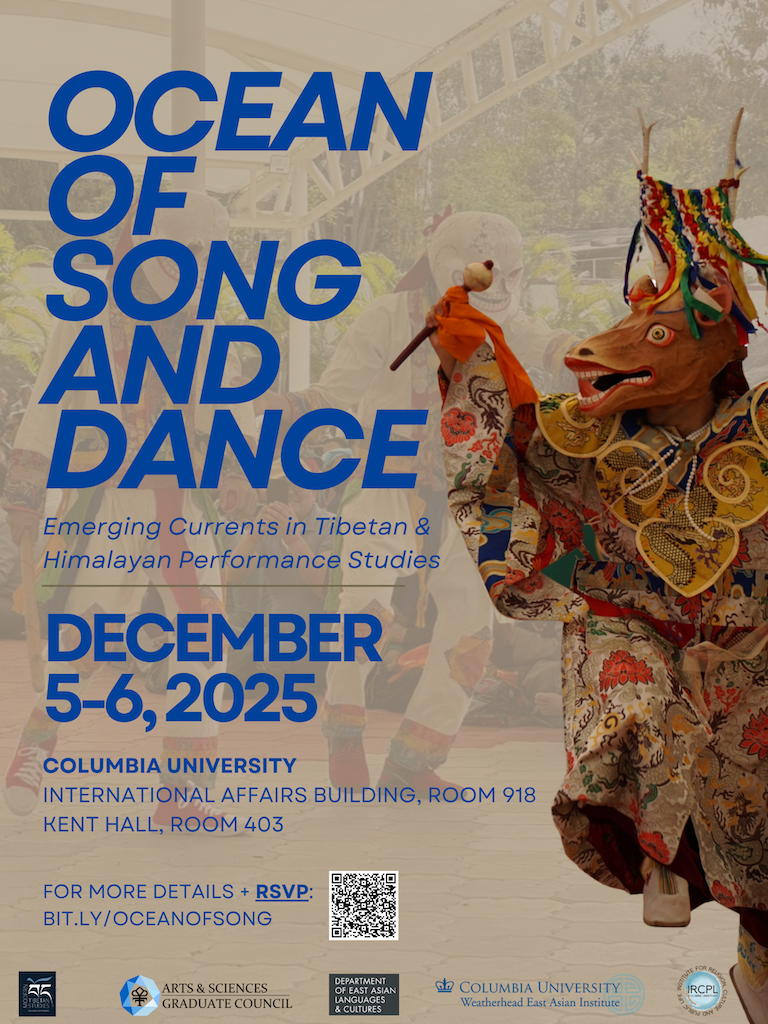PANEL I: TEXT & PERFORMANCE
The Play of the Text: Rhythmic Bodily Movement and the Experience of Religious Meaning
Kimerer LaMothe
Within the study of religion, a tendency to privilege textual forms of religious expression and inward form of religious experience has resulted in a paucity of conceptual resources for acknowledging the agency of human bodies in the production of religious meaning. In this panel, LaMothe shares her ecokinetic phenomenological approach to the study of religion. This approach understands religious systems and symbols, texts and rituals, as patterns of bodily movement, or “movement potentials,” which educate human senses to ranges of possible meaning and action. An ecokinetic approach offers myriad opportunities for revealing the originary and constitutive role that dancing in particular, and bodily movement in general, play in the world’s religions.
Incomplete Choreographies: Authorizing & Activating the Absent Body in Tibetan Buddhist Dance-Writing
Constantine Lignos
Beginning as early as the 16th century in Europe, the word choreography came to mask a certain anxiety around the two activities it brings together. Dancing (choreo-) is fluid, embodied, and ephemeral, whereas writing (-graphy) is fixed, disembodied, and symbolic. Without recourse to written documentation, without the ability to “capture” the body on the page, dance, it was feared, would forever be lost. This anxiety, however, is absent from Tibetan Buddhist dance texts dating back to at least the 13th century. Rather than attempting to preserve the entirety of a performance, these texts assume that the dance already lives in the body—or “in the bones”—of trained practitioners. Drawing on an archive of some 60 Tibetan Buddhist dance texts, I show how these writers created living texts that reside in the space between the body and the page. They do not record every step but rather authorize ritual lineage and activate embodied knowledge through cosmological framings, cues, and mnemonic prompts. By taking on performative functions, these texts do not merely document performance, but project ritual action forward, preserving memory even as they shape the future, summoning bodies, gestures, and worlds into being.

 explore the shifting currents of song, dance, ritual, and theatre across the Tibetan and Himalayan worlds. Featuring a keynote address by Jamyang Norbu and panels on performance, gender, and identity, the program also includes live, immersive demonstrations and participatory workshops on ache lhamo, or Tibetan opera. The conference highlights performance at the intersections of tradition and innovation, the sacred and the secular, and the local and the global, culminating in a participatory discussion on new directions for performance studies in Tibetan & Himalayan contexts. Through conversation, performance, and shared experience, Ocean of Song and Dance celebrates the creativity and interconnectedness of Himalayan expressive cultures, inviting reflection on the power of performance to carry history, shape identity, and inspire new cultural currents.
explore the shifting currents of song, dance, ritual, and theatre across the Tibetan and Himalayan worlds. Featuring a keynote address by Jamyang Norbu and panels on performance, gender, and identity, the program also includes live, immersive demonstrations and participatory workshops on ache lhamo, or Tibetan opera. The conference highlights performance at the intersections of tradition and innovation, the sacred and the secular, and the local and the global, culminating in a participatory discussion on new directions for performance studies in Tibetan & Himalayan contexts. Through conversation, performance, and shared experience, Ocean of Song and Dance celebrates the creativity and interconnectedness of Himalayan expressive cultures, inviting reflection on the power of performance to carry history, shape identity, and inspire new cultural currents.
